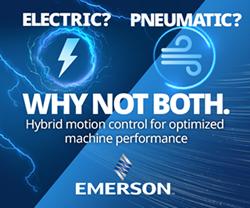Using Technology to Design Smart Factories
Beyond Prototyping: Scaling Up To Additive Manufacturing For Production
Sophisticated Automation Enhances Precision, Flexibility and Product Safety
How Advanced Precision Motors Empower the IoT and Industry 4.0
Additive manufacturing in the medical industry
Talking PACK EXPO with Dorner
The Role of Sensors in Industry 4.0
New Mobile Voice Technology Automation Brings Easy Onboarding and Increased Accuracy
Talking PACK EXPO with OMRON
Talking PACK EXPO with QC Conveyors
Manufacturing Management for Complex Products: The IIoT Enables Real-Time Visibility and Intelligence
zenon helps Novarc Technologies optimize HMI user experience
Transformative Technologies to Shape the Future of Manufacturing
Talking PACK EXPO with Emulate3D
ManufacturingTomorrow - Special Tradeshow Coverage
PACK EXPO International
Records 1186 to 1200 of 1789
First | Previous | Next | Last
Featured Product

Elevate your manufacturing processes with data-driven insights
Manufacturing and Automation - Featured Company

